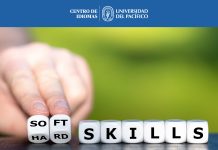Among the many myths related to acquiring a foreign language, there is one, very widespread, about children being facile second language learners. In fact, there are many people, including numerous English teachers, who think that children are better qualified than adults to learn a foreign language. However, scientific research does not seem to support this belief.
Such line of thinking argues that children are superior to adults in learning second languages because their brains are more flexible (Lenneberg, 1967; Penfield & Roberts, 1959). The argument contends that children can learn languages easily because their cortex is more plastic than that of older learners. The critical period theory, which started for other learned abilities, extended to this field, trying to involve second language acquisition.
The critical period hypothesis (CPH) that was developed in Canada, in 1959, by Wilder Penfield and Lamar Roberts, and popularized by Eric Lenneberg in 1967, specified that there are maturational constraints on the time a first language can be acquired. They contended that first language acquisition relies on neuroplasticity. And they went on to warn that if language acquisition did not occur by puberty, some aspects of language might be learned, but full mastery could not be achieved. This was based in the belief that first language acquisition must occur before cerebral lateralization is complete, at about the age of puberty. However, when they tested the naturalistic acquisition of Dutch by English speakers of different ages in Holland by assessing several aspects of their second language ability, they found that the subjects in the age groups 12-15 and adults made the fastest progress during the first few months of learning Dutch and that at the end of the first year the 8-10 and 12-15-year-olds had achieved the best control of that language. The 3-5-year-olds scored lowest on all the tests employed (Snow and Hoefnagel-Höhle, 1978). These data unquestionably does not support the critical period hypothesis for language acquisition.
Further experimental research has been carried out, comparing the performances of children and adults in their efforts to acquire a foreign or a second language. The results have consistently demonstrated the inferiority of young children under controlled conditions (McLaughlin.1992). Additionally, naturalistic research comparing children and adults learning second languages as immigrants does not support the notion that younger children are better at second language learning.
Moreover, studies comparing the rate of second language acquisition in children and adults have shown that although children may have an advantage in achieving native-like fluency in the long run, adults actually learn languages more quickly than children in the early stages (Krashen, Long, and Scarcella, 1979).
Dr. Mary Schleppegrell, a renowned linguist and author of a number of books in this discipline, as well as language Professor at the University of Michigan, insists that there is no decline in the ability to learn as people get older. She states that, contrary to popular stereotypes, older adults can be good foreign language learners and that “the difficulties older adults often experience in the language classroom can be overcome through adjustments in the learning environment, attention to affective factors, and use of effective teaching methods.” (Schleppegrell, 1987). Although she admits that there could be certain impediments due to mature age, such as hearing and vision loss, she disparages that as minor considerations and goes on to say that there is no decline in the ability to learn as people get older.
Notwithstanding this mental capacity of the elderly, it is true that many chronic diseases can affect their ability to learn, like hearing loss and decreased visual acuity. These factors should be contemplated by teachers, as well as considerations about the different ways young people and seniors learn. The first ones rely significantly on their short-term memory, while older adults “integrate new concepts and materials into already existing cognitive structures” (Schleppegrell, 1987)
However, there is an area where children are at an advantage over adults. It is in the area of listening, which it necessarily reflects later on the quality of pronunciation. Scientists assert that babies are born with the capacity to hear all the sounds of human speech, whichever the language or geographical location of the speakers. They possess then the dormant capacity to discriminate all possible speech contrasts (phonemes). Little by little, as they are exposed to their mothers’ language, their perception becomes language specific. They only develop the capacity to recognize and eventually understand that one language (in some cases babies are exposed to two different languages and they learn them both), while they lose the capability to distinguish sounds that do not belong to their language system. This ability begins to decline around the age of nine months.A quantity of studies have established that the younger one begins to learn a second language, the superior his accent in that language will be (Asher & Garcia, 1969)
Another fact that plays in favor of children learners is that they usually do not question what they are taught by their instructors. They are constantly learning new language and immediately put it into practice without a second thought. On the other hand, the adult learner reacts to all the things that they find in the target language which are different to what they use in their own tongue. By then the basic grammar rules are well rooted in their minds and they counter with “why?” “how come” or even “that is not logical.” They are not so ready to accept the differences as children are. They have a pretty good knowledge about how their language is structured, but that sometimes works in their favor and some other times against them. The phenomenon of interference is much more common and frequent then in adults than in children.
Of course, all these considerations are of a general nature. Each person lives their own process in accordance with their background, environment, culture, experiences and personal potentials. There is only one thing we can promise: IT IS NEVER TOO LATE TO LEARN.
Estimated reading time: 4 minutes, 56 seconds











